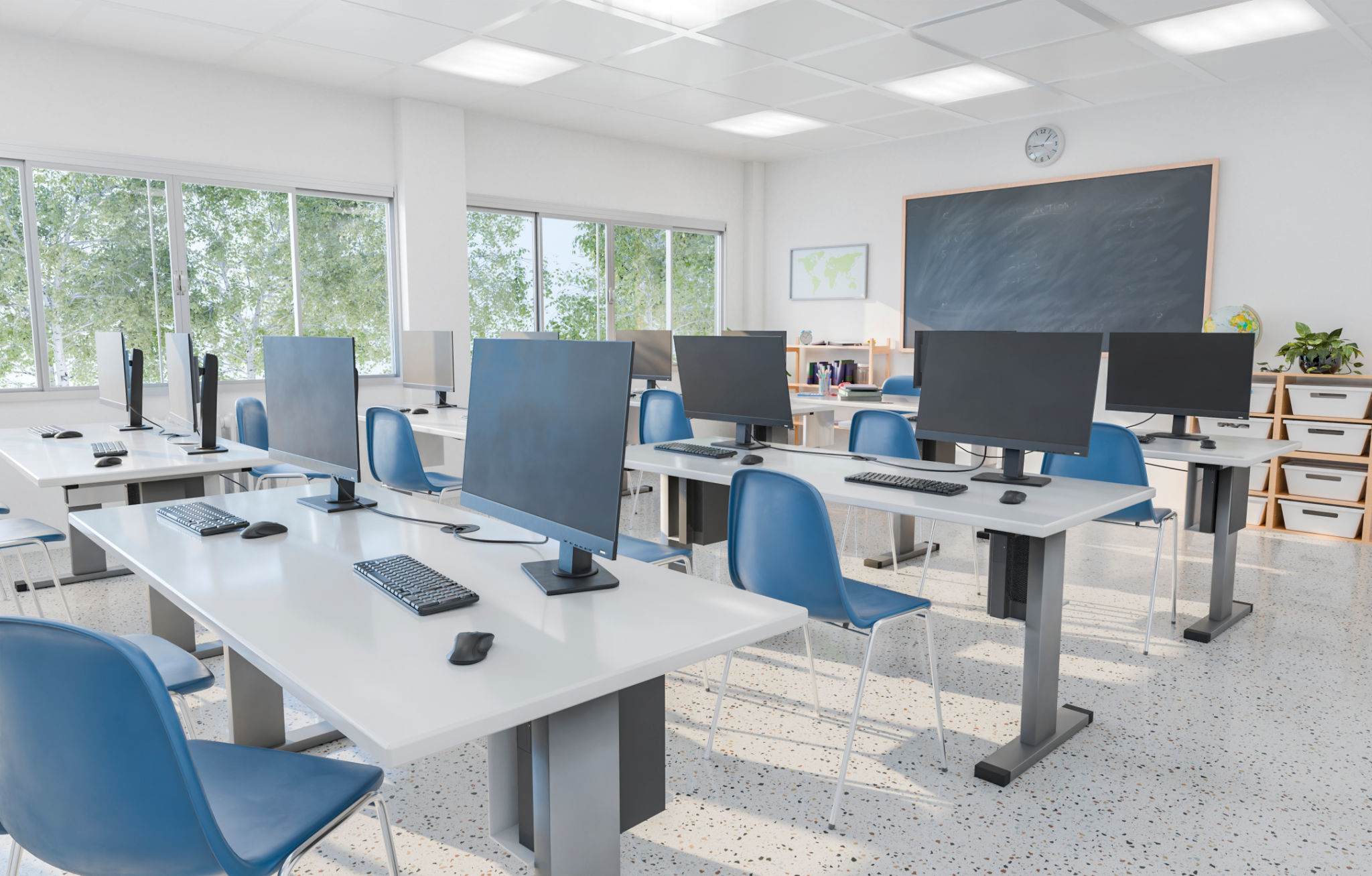The Impact of Interactive Screens on UAE Classrooms
Introduction to Interactive Screens
The integration of technology in education has brought about significant changes in teaching methods worldwide, and the UAE is no exception. One of the most notable advancements in this regard is the use of interactive screens in classrooms. These digital tools are transforming traditional learning environments by offering dynamic and engaging ways to present information.
Interactive screens have become a staple in modern classrooms, providing a platform for multimedia presentations, interactive lessons, and collaborative student activities. They are revolutionizing the way educators deliver content and how students interact with it.

Enhanced Student Engagement
One of the most significant impacts of interactive screens is their ability to enhance student engagement. Traditional teaching methods often involve passive learning, where students are mere recipients of information. Interactive screens change this dynamic by allowing students to participate actively in their education. With features like touch capabilities and multimedia integration, these screens make learning more immersive.
Teachers can use interactive screens to display videos, animations, and other multimedia content that captures students' attention. This approach helps in maintaining interest and encouraging active participation, which is crucial for effective learning.
Facilitating Collaborative Learning
Interactive screens also promote collaborative learning—a key component in developing critical thinking and problem-solving skills. Students can work together on projects, brainstorm ideas, and present their findings using these devices. The ability to connect multiple devices to the screen allows for seamless collaboration, enabling students to share their work and receive instant feedback from peers and teachers.

Improving Teacher Efficiency
For educators, interactive screens offer a tool that enhances teaching efficiency. With access to a wide range of digital resources, teachers can create engaging lesson plans that cater to diverse learning styles. Interactive screens allow for real-time annotations, making it easier for teachers to explain complex concepts.
Moreover, these screens support various educational software applications that assist teachers in managing classroom activities, tracking student progress, and providing personalized learning experiences. This not only saves time but also allows for more focused and effective teaching.
Adapting to Diverse Learning Needs
Interactive screens cater to different learning needs by providing customizable features. Students can learn at their own pace and revisit information as needed. For those with special educational needs, interactive screens offer accessibility features such as text-to-speech and adjustable text size, ensuring that every student can participate fully in classroom activities.

Challenges and Considerations
While the benefits of interactive screens are substantial, there are challenges that schools in the UAE must consider. The initial cost of installing these systems can be high, and there is a need for ongoing maintenance and technical support. Additionally, teachers require training to use these tools effectively, which can be resource-intensive.
It is also important to strike a balance between technology use and traditional teaching methods. While interactive screens offer numerous advantages, they should complement rather than replace conventional educational practices.
Conclusion
The impact of interactive screens on UAE classrooms is profound, offering innovative ways to engage students and enhance educational outcomes. As technology continues to evolve, it will be crucial for educational institutions to adapt and integrate these tools thoughtfully. By doing so, they can ensure that students are equipped with the skills and knowledge needed to thrive in a digital world.
